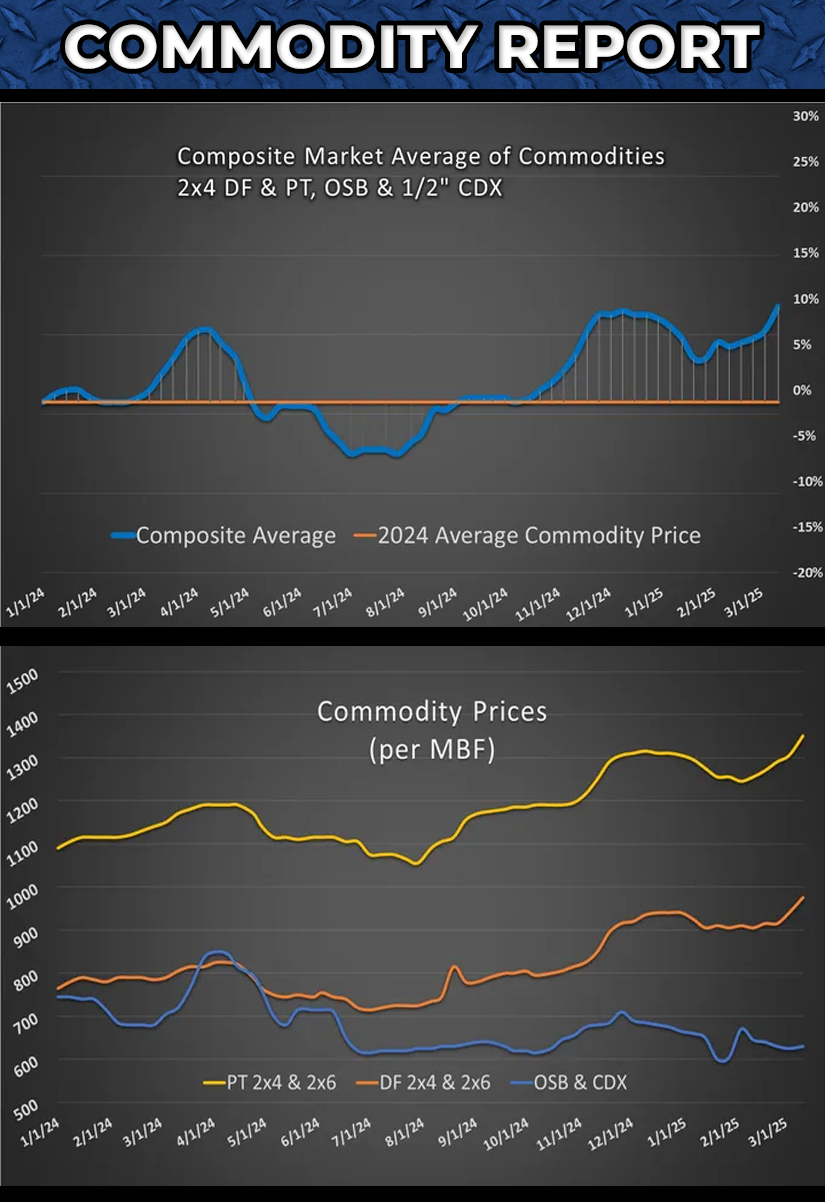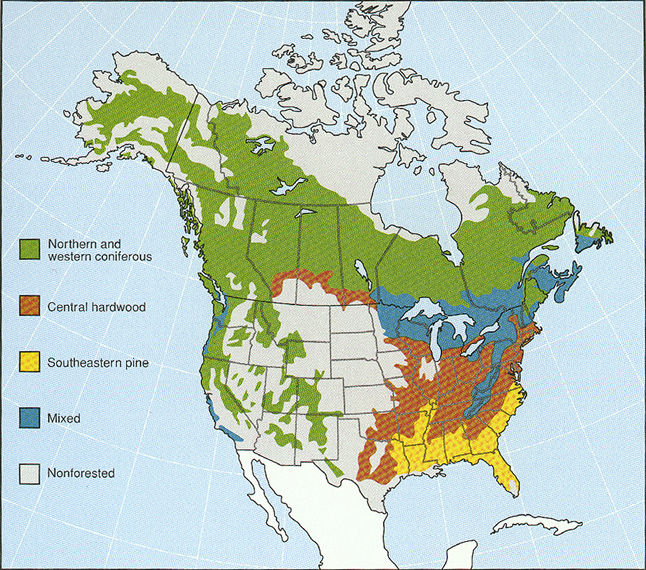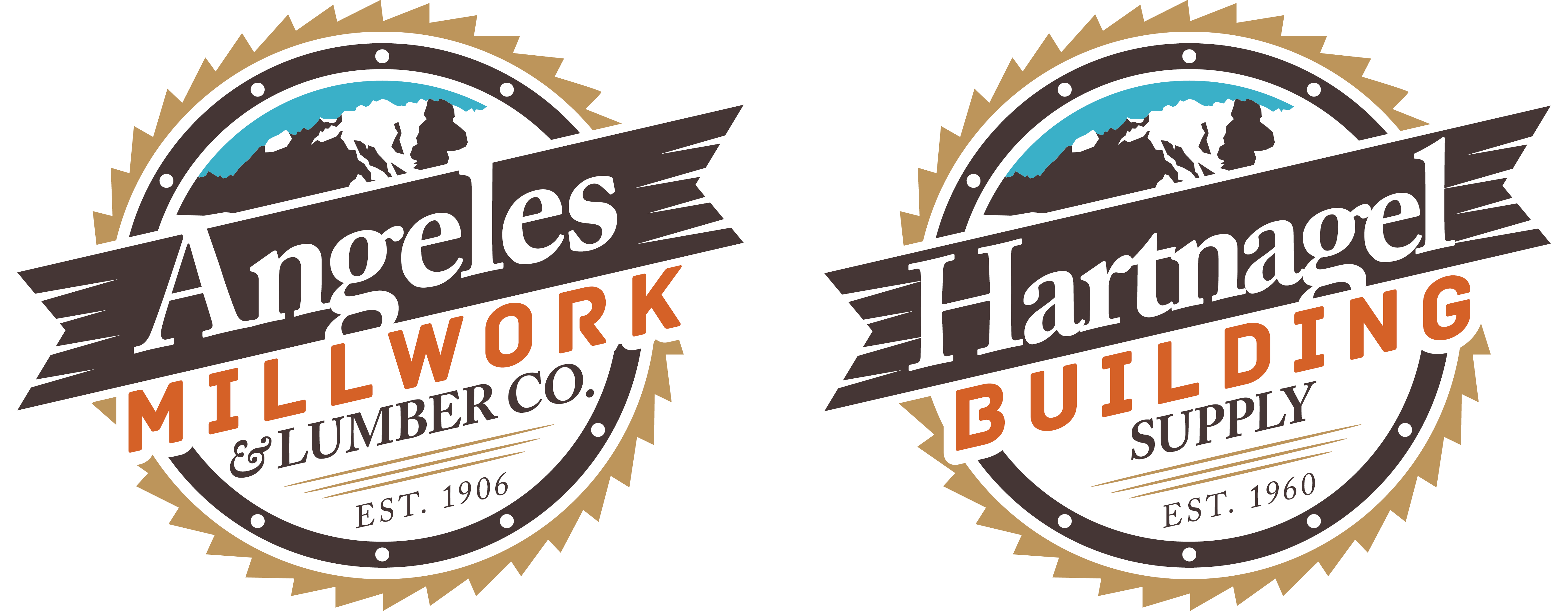Lumber Commodity Report

Welcome to our Monthly Lumber Commodity Report.
This resource is dedicated to providing builders, contractors, and homeowners with the latest insights into lumber market fluctuations, aimed at empowering you to make informed decisions for pricing and budgeting future projects enabling better preparation and planning for your construction and home improvement endeavors.
To ensure you’re always updated, bookmark this page and consider subscribing for direct updates by emailing dannys@lumbertradersinc.com with “Please add to commodity report” in the subject line.
As a subscriber, you’ll receive these critical reports straight to your inbox, providing you with the knowledge needed to navigate the complexities of lumber pricing effectively. Stay informed with us, and together, let’s build a future that’s not just promising but well-prepared.
See below for latest graphs and commentary.

As you do your quotes, just a reminder to always include escalation clauses in your bids!
- Doug Fir 2×4 +4.3%
- Doug Fir 2×6 +3.1%
- Doug Fir 2×8 +0.7%
- Doug Fir 2×10 +3.3%
- Doug Fir 2×12 -5.5% (this is the market correction)
- DF 2×4 92-5/8” +5.1%
- DF 2×4 104-5/8” +3.8%
- DF 2×6 92-5/8” +7.7%
- DF 2×6 104-5/8” +3.7%
- Pres Treat 2×4 +4.9%
- Pres Treat 2×6 +2.3%
- Pres Treat 2×10 +3.1%
- Outdoor Wood 2×4 +2.5%
- Outdoor Wood 2×6 +2.2%
- OSB 15/32” +1.5%
- OSB ¾” EG +0.7%
- OSB ¾” 4×10 +5.3%
The subject of tariffs on lumber—and potential retaliatory trade measures—remains a significant influence on current lumber pricing. I’ve had a few people ask if these tariffs will shift more harvesting and milling to the United States. Rather than delve into policy debates, I wanted to share some general information that might be helpful:

In the Northwest, a large portion of our construction lumber has historically originated in Canada. While there are considerable domestic softwood forests in the western United States (notably Douglas Fir and other coniferous species), Canada’s timber resources are vast, and its lumber industry has traditionally been structured to export heavily to the U.S. market.
The Southeast is largely a pine market (Southern Yellow Pine, for example), while the western U.S. uses a mix of Douglas Fir, Hem-Fir, and SPF (Spruce-Pine-Fir). There is ample forestland in the western states, but Canadian producers still account for a substantial share of U.S. framing lumber supply.
Canada and the United States have been involved in softwood lumber disputes for decades. The U.S. position is that Canadian lumber is subsidized and that tariffs level the playing field. If additional tariffs take effect or existing ones increase, it would likely elevate costs on Canadian-sourced lumber. In the short term, we might continue relying on Canada for supply—simply at a higher price.
Over the long term, if the U.S. ramps up harvesting and increases milling capacity, a greater share of lumber could be sourced domestically. However, even with higher domestic output, demand pressures could keep prices elevated. With strong housing and construction demand, any shift in sourcing or production involves many moving parts—harvesting regulations, mill investments, labor, and environmental considerations all factor into overall costs and availability.
This is a complex, interconnected market. My goal here is not to provide political commentary but rather a straightforward look at an ongoing topic that has large implications for our industry. I hope you find it helpful as you plan for future building projects.

Danny Steiger│President & CEO
Lumber Traders Inc.
Angeles Millwork & Lumber Co., Inc.
Angeles Rentals Equipment & Supply
Hartnagel Building Supply, Inc.
Hartnagel Glassworks
As always, the above content is not financial advice. Simply data to help you be better prepared. Our goal is to create more informed builders and homeowners to properly price and budget for future jobs and projects.
We will continue to update you on changes in the commodity market. Displayed above are the latest graphs.
Angeles Millwork and Hartnagel Building Supply see our customers as business partners, and their success is, in turn, ours. That is why every month, we will publish a commodity pricing chart on our Facebook page and in our monthly newsletter. The chart will represent a correlation of average pricing trends over the past year of Douglas Fir 2×4, Pressure Treated 2×4 Lumber, 7/16” OSB, and ½” CDX.
